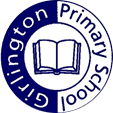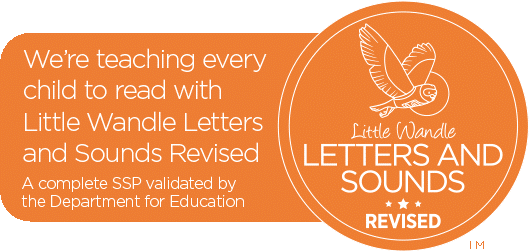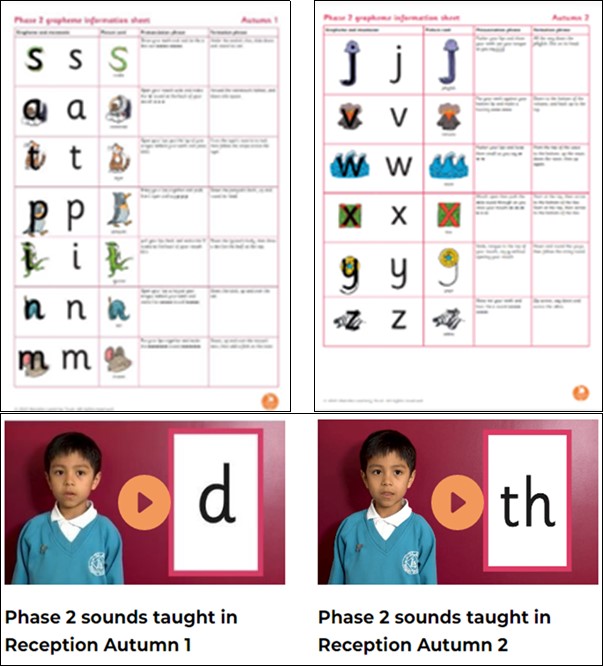Phonics and Early Reading

At Girlington, we believe that all of our children can become fluent readers and writers and we are committed to ensuring that this is achieved for all of our children regardless of any barriers that they may have to their learning. This is why we have chosen to adopt Little Wandle Letters and Sounds Revised as our systematic synthetic phonics programme.
The Little Wandle Letters and Sounds Revised programme begins in the earliest years with the Foundations for Phonics programme, which we deliver to our Gems (2 year old provision) and Nursery children. This ensures that our children are well prepared to begin to learn grapheme-phoneme correspondences and blending to read in Reception and Year 1, where they will follow the Little Wandle Letters and Sounds Revised progression which is designed to ensure that all children build on their growing knowledge of the alphabetic code, mastering phonics to read and spell as they move through school.
At Girlington, we understand that being able to read is the most crucial skill that we can teach our children as without it they will find it increasingly difficult to access other areas of the curriculum and their life chances will be significantly reduced. The Little Wandle Letters and Sounds Revised programme is designed to ensure that no child is left behind and where teachers think that this may be the case, children will be supported with Little Wandle’s daily keep up or catch up in Reception and Year 1, or Rapid Catch up in Year 2 and Key Stage 2. In addition to our daily phonics lessons, we also model the application of the alphabetic code through phonics in shared reading and writing, both inside and outside of the phonics lesson and across the curriculum. This runs alongside our strong focus on language development in all year groups, as we know that speaking and listening are crucial skills for reading and writing in all subjects.
A consistent approach
Little Wandle is the only scheme used throughout school as we know that a consistent approach lowers cognitive load and gives our children the best chance of success. Every adult at Girlington is trained to deliver Little Wandle phonics and reading to ensure that phonics and reading are delivered in the same way in every year group and by every adult. This includes all adults using the same language, the same routines and the same resources. Weekly content grids, lesson templates and ‘How to’ videos all help to ensure that all adults maintain consistency in their teaching and this is monitored half termly by the Reading Leader and SLT so that any misconceptions or inconsistencies can be rectified as soon as possible.
Overview of Little Wandle Letters and Sounds Revised at Girlington
| Gems (2 year old provision) | Nursery | Reception | Year 1 | Year 2 | KS2 | SEND |
| Foundations for Phonics | Foundations for Phonics | Little Wandle Letters and Sounds Revised – Daily Keep Up – Group Catch Up | Little Wandle Letters and Sounds Revised – Daily Keep Up – Group Catch Up | Rapid Catch Up | Rapid Catch Up | Little Wandle Letters and Sounds Revised (Appropriate pathway) |
| Nursery Rhyme of the week | Nursery Rhyme of the week | Small group reading 4 times per week | Small group reading 4 times per week | Small group reading 3 times per week | Small group reading 3 times per week | Small group reading as appropriate |
Foundations for phonics in Gems and Nursery
Foundations for phonics is started with our youngest children in Gems and Nursery. Sessions take place daily with a balance of child-led and adult-led experiences supporting all children in meeting the curriculum expectations for ‘Communication and Language’ and ‘Literacy’. These may include:
- sharing high-quality stories and poems
- learning a range of nursery rhymes and action rhymes
- activities that develop focused listening and attention, including oral blending
- attention to high-quality language.
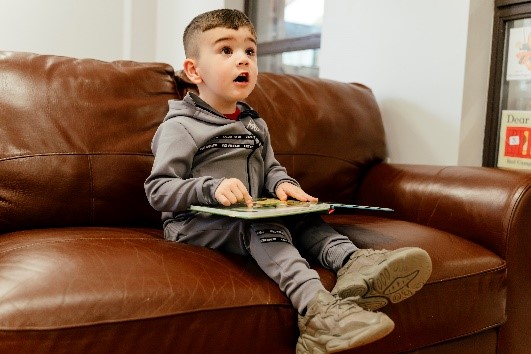
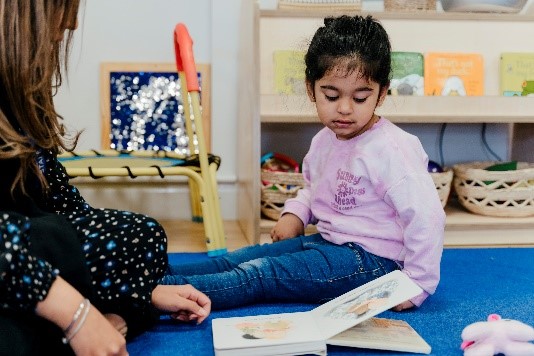
By the end of Nursery, children are well prepared to begin learning grapheme-phoneme correspondences (GPCs) and blending in Reception.
Reception
Children start phase 2 of the Little Wandle phonics programme as soon as possible after starting Reception, usually week 2 of the Autumn term when children are settled in their new surroundings. Phase 2 teaches children the first 32 phonemes (36 graphemes) and follows a carefully sequenced progression so that children are able to start to read and write as soon as reasonably possible.
Phonics is delivered every day in Reception so that children have plenty of opportunities to revisit, practice and apply their phonic knowledge. Repeated practice is also provided in morning tasks and within the provision in the classroom. It is very important that children learn to pronounce the phonemes correctly. Where children pronounce the phonemes incorrectly or use letter names, they will not be able to successfully blend to read words.
These guides and videos will show you how to pronounce all of the Phase 2 phonemes. You can use these with your child at home to help them with their pronunciation of phonemes and recognition of corresponding graphemes. Parents will also be invited to attend a phonics meeting with the Phonics Leader in the Autumn Term.
Click on the link below to find videos and resources on the parents section of the Little Wandle website
By the end of the Autumn Term, we aim for all children to be able to blend to read words with Phase 2 sounds. As part of our commitment to ensuring all children can read and that no child is left behind, we will monitor how children are keeping up with the daily phonics sessions and will provide daily keep up sessions as and where needed.
In the Spring Term, children will progress through Phase 3 of the programme, learning many new phonemes and graphemes including digraphs (2 letters making 1 sound, and trigraphs, 3 letters making 1 sound).
This video will show you the phonemes that are taught in Phase 3.
Once children have been taught all of the phase 2 and phase 3 phonemes and graphemes they will move onto reading longer words and increasing their fluency.
Year 1
Children in Year 1 continue to follow the Little Wandle Letters and Sounds Revised programme. They learn how to ‘grow the code,’ learning that there are different ways to represent the different phonemes that they learnt in Reception.
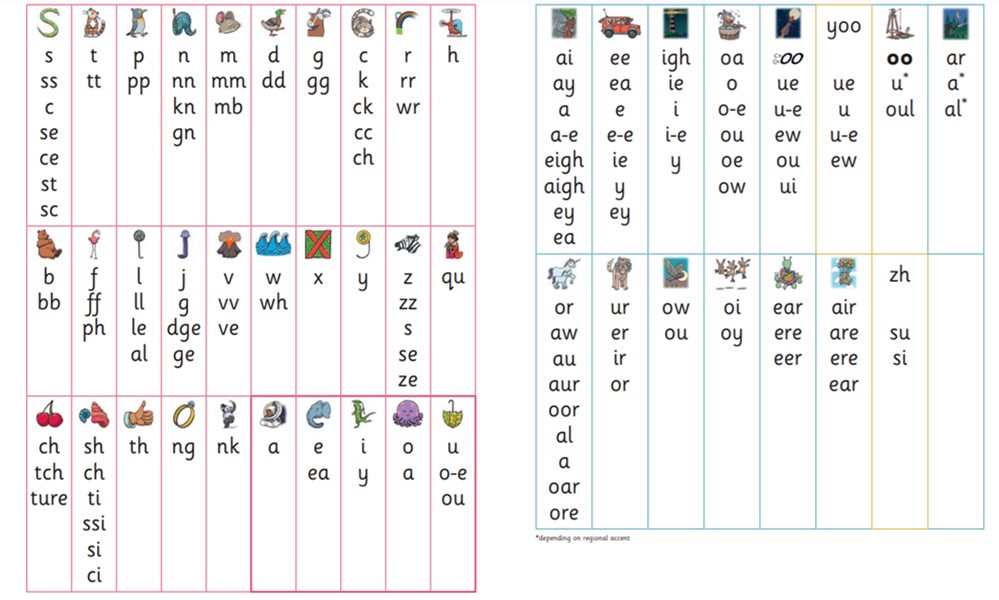
By the end of Year 1, children will have been taught all of the phonemes and graphemes in the English language and should be able to decode and read any word. They should be reading age appropriate texts with confidence and fluency. Our aim is for children to have completed the Little Wandle programme by the end of Year 1.
SEND
At Girlington Primary School, it is our aim that every child will learn to read, no matter what barriers they may have to their learning. Children with special educational needs follow the Little Wandle Phonics programme as outlined above. This may, however, be personalised depending on individual learning needs. Please speak to a member of staff if you require more information about how we deliver the Little Wandle programme to children with SEND.
Daily Keep-up lessons ensure every child learns to read
Any child who needs additional practice has daily Keep-up support, taught by a fully trained adult. Keep-up lessons match the structure of class teaching, and use the same procedures, resources and mantras, but in smaller steps with more repetition, so that every child secures their learning.
We timetable daily phonics lessons for any child in Year 2 and above who is not fully fluent at reading or has not passed the Phonics screening check. These children urgently need to catch up, so the gap between themselves and their peers does not widen. We use the Rapid Catch-upassessments to identify the gaps in their phonic knowledge and teach to these using the Rapid Catch-upresources – at pace.
These short, sharp lessons last 15-20 minutes daily and have been designed to ensure children quickly catch up to age-related expectations in reading.
Year 2 and beyond – Rapid Catch Up
There may be a number of reasons why children in Year 2 and beyond are not yet able to decode confidently or read fluently. They may have gaps in their learning or may be new to school, having never done phonics before. Where this is the case, we will support these children by using the Little Wandle Rapid Catch Up Scheme. This is a much faster paced and age appropriate version of the Little Wandle scheme which enables children to access age appropriate reading and therefore the full curriculum much more rapidly, and also prepares them for the KS3 curriculum when they move onto secondary school.
Ongoing assessment for Rapid Catch-up in Years 2 to 6
Children in Year 2 to 6 are assessed through:
- the Rapid Catch-up initial assessment to quickly identify any gaps in their phonic knowledge and plan appropriate teaching
- the Rapid Catch-up summative assessments to assess progress and inform teaching
- the Rapid Catch-up fluency assessments when children are reading the Phase 5 set 3, 4 and 5 books for age 7+.
The fluency assessments measure children’s accuracy and reading speed in short
one-minute assessments. They also assess when children are ready to exit the Rapid Catch-up programme, which is when they read the final fluency assessment at 90+ words per minute.
Reading practice sessions
Small group reading provides children with an opportunity to practice and apply what they have learnt in phonics. Reading sessions are taught by fully trained adults to small groups of approximately 6 children. Teachers will use the Little Wandle Letters and Sounds Revised assessments and matching grids to ensure that children are given a book that is fully decodable in line with their secure phonic knowledge.
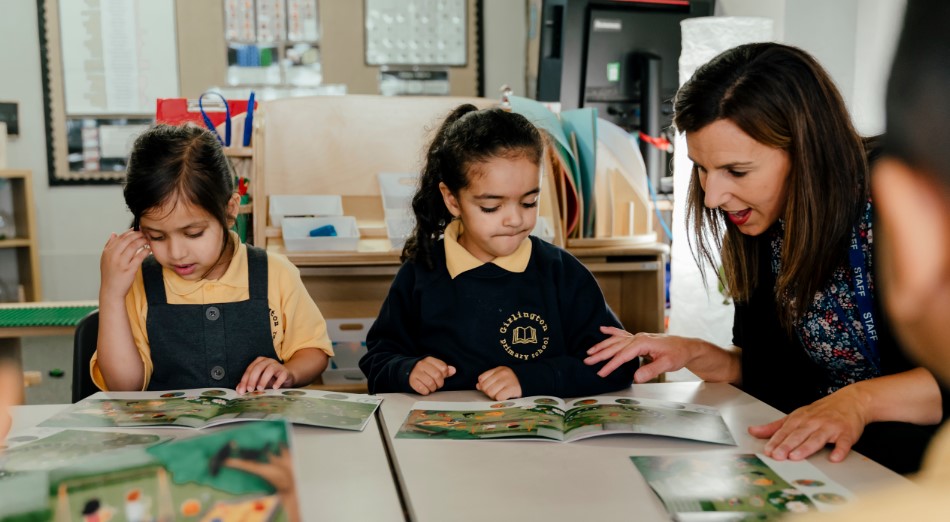
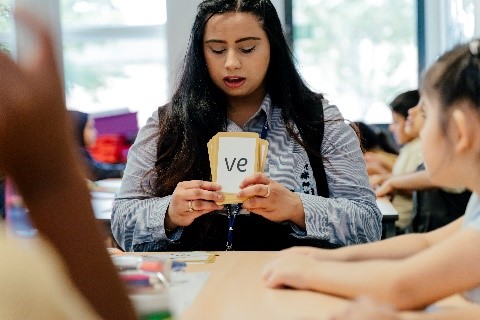
Each reading practice session has a clear focus, so that the demands of the session do not overload the children’s working memory. The reading practice sessions have been designed to focus on three key reading skills
| Read 1 – Decoding | Children will be introduced to a new book. They will practice decoding the words in the book and will discuss the meaning of any new words before reading. Children will then have the opportunity to decode to read their books independently, with adults tuning in and scaffolding where appropriate. |
| Read 2- Decoding | Children will have a further decoding session where they will be encouraged to decode at a quicker pace, progressing towards blending in their heads and/or reading automatically. |
| Read 3- Prosody | Children will develop comprehension of what they are reading by learning about and practicing reading appropriate parts of the text with expression. |
| Read 4 – Comprehension | Children will talk about their text, using it to recall information or infer. They will be taught to use parts of the text to justify their answers. |
Home reading
The decodable reading practice book is taken home after the first read to enable children to continue to practice their reading and ensuring that success is shared with the family. Each child in KS1 and Reception also takes home a reading record book where parents and teachers can record reading practice. In KS2 children take home a home learning sheet on which they can record their reading practice
Assessment
Assessment is used to monitor progress and to identify any child needing additional support as soon as they need it.
Assessment for learning is used:
- daily within class to identify children needing Keep-up support
- weekly in the Review lesson to assess gaps, address these immediately and secure fluency of GPCs, words and spellings.
Summative assessment for Reception and Year 1 is used:
- every six weeks to assess progress, to identify gaps in learning that need to be addressed, to identify any children needing additional support and to plan the Keep-up support that they need.
- by SLT and scrutinised through the Little Wandle Letters and Sounds Revised assessment tracker, to narrow attainment gaps between different groups of children and so that any additional support for teachers can be put into place.
Fluency assessments measure children’s accuracy and reading speed in short one-minute assessments. They are used:
- in Year 1, when children are reading the Phase 5 set 3, 4 and 5 books
- with children following the Rapid Catch-up programme in Years 2 to 6, when they are reading the Phase 5 set 3, 4 and 5 books
- to assess when children are ready to exit their programme. For Year 1 children, this is when they read the final fluency assessment at 60–70+ words per minute. Older children can exit the Rapid Catch-up programme when they read the final fluency assessment at 90+ words per minute. At these levels, children should have sufficient fluency to tackle any book at age-related expectations. After exiting their programme, children do not need to read any more fully decodable books.
A placement assessment is used:
- with any child new to the school in Reception and Year 1 to quickly identify any gaps in their phonic knowledge and plan and provide appropriate extra teaching.
The Rapid Catch-up assessment is used
- with any child new to the school in Year 2 and above to quickly identify any gaps in their phonic knowledge and plan and provide appropriate extra teaching.
Statutory assessment – Phonics Screening
In the Summer term of Year 1, children complete the government’s phonics screening check. This assesses children on how well they can decode a number of words. Year 1 class teachers will hold a meeting for parents in the Spring term to ensure that parents feel confident in supporting their children during the phonics screening check. Children who do not pass the phonics screening check in Year 1 are re-screened in Year 2.
